Reviewed by Dr.Vijaykumar Kamat & written by
Dr.Gauri Mane.
Understanding Subtalar Arthritis
Subtalar arthritis, commonly known as arthritis in the subtalar joint, is a crippling disorder marked by inflammation and degeneration of the subtalar joint. This joint, which connects the talus and calcaneus bones, is essential for foot mobility and stability. Subtalar arthritis can cause severe pain, stiffness, and mobility limits, lowering people’s quality of life.
If you have chronic foot discomfort, poor mobility, or stiffness, you may have subtalar arthritis. In this post, we’ll look at subtalar arthritis’s symptoms, diagnosis, treatment choices, and pain-management measures. Whether you’re recently diagnosed or wanting more information on subtalar arthritis, this thorough guide will provide helpful insights to help you navigate your journey effectively.
Now, let’s go deeper into the complexities of subtalar arthritis, starting with an awareness of the underlying mechanics and contributing components.
Understanding Subtalar Arthritis
Subtalar arthritis is a form of arthritis that affects the subtalar joint, which is located beneath the ankle joint. This joint enables complicated movements required for walking, running, and other weight-bearing activities. Arthritis in the subtalar joint arises when cartilage deteriorates, causing bone-on-bone contact, inflammation, and pain.
Causes and Risk Factors:
Causes: Subtalar arthritis can be caused by a variety of reasons, including previous trauma or damage to the foot or ankle, recurrent stress on the joint, inflammatory disorders such as rheumatoid arthritis, and hereditary susceptibility.
Risk factors for subtalar arthritis include a history of ankle injuries, excessive pronation or supination, obesity, and certain systemic inflammatory illnesses.
Prevalence and Impact:
- Subtalar arthritis is less frequent than arthritis in bigger weight-bearing joints such as knees and hips. However, underdiagnosis may lead to an underestimation of its prevalence.
- The condition can impede mobility by causing pain during weight-bearing activities, joint stiffness, and restricted range of motion.
Clinical Presentation of Subtalar Arthritis
Subtalar arthritis symptoms might be mild or severe, and they may develop gradually. Common indications and symptoms include:
- Subtalar joint discomfort is persistent pain in the ankle’s lateral or medial facet that worsens with weight-bearing activities or prolonged standing.
- Stiffness: Difficulty moving the foot or ankle, particularly in the morning or after inactivity.
- Swelling, soreness, warmth, and redness around the subtalar joint indicate inflammation.
- Limited Range of Motion: Reduced flexibility and difficulties walking on uneven surfaces or climbing stairs.
- Instability or “giving way” of the ankle joint with vigorous activity or rapid motions.
These symptoms can considerably impair a person’s ability to accomplish everyday duties and engage in physical activities, lowering their overall quality of life. Early detection and treatments are critical for successfully managing subtalar arthritis and reducing its effects on mobility and function.
Diagnostic and Assessment
Subtalar arthritis is normally diagnosed using a combination of clinical evaluation, imaging investigations, and, in some cases, diagnostic injections to determine the site of discomfort. Healthcare experts may carry out the following assessments:
Clinical Examination:
- Evaluation of medical history, including past injuries, joint symptoms, and family history of arthritis.
- Examine the subtalar joint for soreness, edema, range of motion, and stability.
Imaging studies:
- Radiographic imaging, such as X-rays, can detect bony alterations, joint space narrowing, and osteophytes.
- MRI (Magnetic Resonance Imaging) can help diagnose and assess the severity of subtalar arthritis by providing comprehensive images of soft tissues, cartilage, and ligaments.
Diagnostic injections, such as local anesthetics or corticosteroids, can alleviate pain and confirm the diagnosis.
Diagnosing subtalar arthritis requires distinguishing it from other conditions with similar symptoms, such as ankle sprains, tendonitis, or other types of arthritis (e.g. osteoarthritis, rheumatoid arthritis).
Treatment and Management Approaches
Treatment for subtalar arthritis attempts to alleviate pain, enhance joint function, and slow disease progression. The intensity of symptoms, the progression of the condition, and the individual’s general health status all influence the therapy decision. Common treatment options include:
Nonsurgical Interventions:
- Medications include NSAIDs, analgesics, and corticosteroid injections to manage pain and inflammation.
- Physical therapy includes strengthening exercises, stretching, and joint mobilization procedures to enhance muscular strength, flexibility, and stability.
- Orthotic devices, such as shoe inserts or ankle braces, can help relieve pressure on the subtalar joint.
Surgical Options:
- Subtalar Joint Fusion Surgery: For severe cases of subtalar arthritis and joint deterioration, surgical fusion may be advised to stabilize and reduce discomfort.
- Arthroscopic surgery involves minimally invasive treatments to remove injured tissue, clean the joint, and perform joint debridement.
Biogetica provides a variety of natural and holistic remedies for managing a range of medical issues, including hand and finger discomfort. Some of the products offered by Biogetica include the following:
Cronisol D: Biogetica offers Cronisol D, which is a blend of natural ingredients for managing chronic pain. It is made with a blend of nutritional and herbal substances that are said to provide analgesic and anti-inflammatory effects.
Neuralease: Neuralease is a natural product that promotes the health and function of nerves. Neuralease is often composed of a combination of herbal extracts, vitamins, and minerals that are thought to have neuroprotective and nerve-calming effects.
Arthrose: Arthrose is a bioregulator that enhances the body’s energy and nutritional status. It may maintain and control the best possible joint health.
Prevention and Lifestyle Strategies
While some risk factors for subtalar arthritis, such as genetics or previous injuries, are uncontrollable, various lifestyle changes and preventive interventions can help minimize the risk of developing or aggravating the condition:
- Maintain a healthy weight: Excess body weight can cause stress on the subtalar joint, accelerating joint deterioration.
- Choose shoes with enough arch support and cushioning to relieve pressure on the subtalar joint and improve foot alignment.
- Reduce stress on the ankles and feet by avoiding high-impact activities like running on hard surfaces or participating in sports.
- Actively participate in low-impact activities like swimming, cycling, or walking to improve joint flexibility, strength, and cardiovascular health.
- Warm-up and stretch before exercise to prevent injury.
Living with Subtalar Arthritis: Patient Perspectives
Living with subtalar arthritis can provide unique problems, both physically and emotionally. Individuals, with adequate management and assistance, can live happy lives while efficiently controlling their symptoms. Here are some useful ideas and coping tactics for living with subtalar arthritis:
- Educate yourself. Learn everything you can about subtalar arthritis, including the causes, symptoms, and treatment options. Knowledge allows you to make more educated decisions about your health and lifestyle.
- Communicate with your healthcare team. Maintain open and honest communication with your healthcare providers, such as orthopedic surgeons, physical therapists, and rheumatologists. Discuss any concerns or changes in symptoms right away.
- Adaptive Strategies: Modify everyday activities and routines to accommodate physical restrictions or problems caused by subtalar arthritis. Use assistive gadgets or adaptive equipment to make chores simpler and more achievable.
- Seek help from people living with arthritis through support groups, internet forums, or community organizations. Sharing experiences and ideas with others who are facing similar issues can provide vital emotional support and motivation.
- Prioritize self-care activities that improve physical and emotional well-being, such as relaxation, mindfulness, and enjoyable hobbies.
- Maintain a positive mindset and focus on what makes you happy and fulfilled in life. Living with subtalar arthritis may pose obstacles, but it does not define who you are or what you’re capable of achieving.
Conclusion
Subtalar arthritis is a difficult condition that can seriously impair mobility, function, and quality of life. Individuals can, however, effectively control their symptoms and live satisfying lives by receiving early diagnosis, comprehensive treatment, and proactive management measures. Individuals can reduce the burden of subtalar arthritis on their everyday lives and improve their overall well-being by taking preventive steps, getting appropriate medical care, and making lifestyle changes.
Frequently Asked Questions (FAQs)
Q1. What are some common symptoms of subtalar arthritis?
Subtalar arthritis can cause a variety of symptoms, including persistent discomfort on the lateral or medial side of the ankle, stiffness, swelling, restricted range of motion, and joint instability. People may also have difficulties walking or performing weight-bearing activities.
Q2: How is subtalar arthritis diagnosed?
Subtalar arthritis is normally diagnosed using a combination of clinical evaluation, imaging techniques (such as X-rays and MRI), and, in some cases, diagnostic injections to determine the site of pain. Healthcare experts may also perform a differential diagnosis to rule out other illnesses causing similar symptoms.
Q3. What are the therapy options for subtalar arthritis?
Treatment for subtalar arthritis attempts to alleviate pain, enhance joint function, and slow disease progression. Non-surgical treatments may include drugs (e.g., NSAIDs and corticosteroid injections), physical therapy, and orthotic devices. In severe cases, surgeons may offer subtalar joint fusion surgery or arthroscopic techniques.
Q4: Can subtalar arthritis be prevented?
While some risk factors for subtalar arthritis, such as heredity or prior injuries, cannot be avoided, numerous preventive practices may help lower the likelihood of acquiring or aggravating the illness. These include keeping a healthy weight, using supportive footwear, avoiding high-impact activities, staying physically active, and using adequate warm-up and stretching procedures.
Q5. How can people deal with subtalar arthritis discomfort and limitations?
Coping with subtalar arthritis entails using adaptive methods, receiving help from healthcare providers and support networks, engaging in self-care activities, and maintaining a positive attitude. Low-impact workouts, the use of assistive devices or adaptive equipment, and a focus on self-care activities can all help people manage their symptoms and enhance their overall well-being.









 100% Money Back Guarantee
100% Money Back Guarantee




























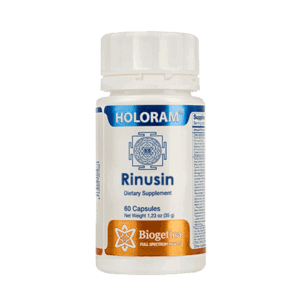
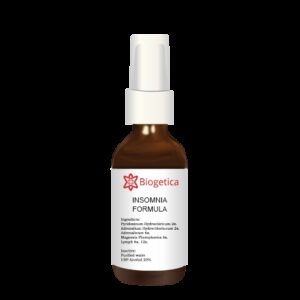









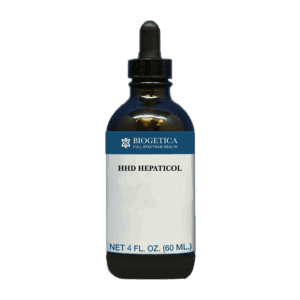
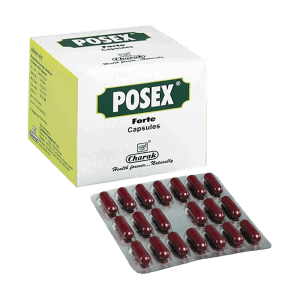
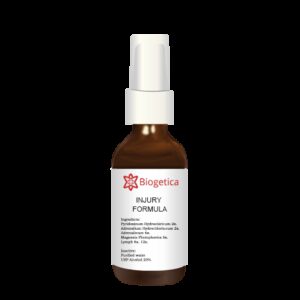


Securing the protection of your home is critical in today’s unpredictable times. Among the top ways to protect your belongings and confidence is by putting resources in a dependable safe. Regardless of whether you’re protecting funds, vital paperwork, or valuable heirlooms, a safe gives a secure storage solution.
Regarding choosing the right safe for your house, there are several factors to consider. Primarily, consider your protection necessities. Decide what belongings you expect to keep in the safe and the level of security required for every item.
Subsequently, consider the dimensions and positioning of the safe. Select a safe that suits conveniently in your home while offering sufficient room for your belongings. Guarantee that the safe can be placed in a secure spot, such as for instance anchored to the floor or wall.
In addition, examine the protective elements of the safe. Search for features such as solid construction, dependable locking mechanisms, and fire-resistant materials. Consider putting resources in a safe with added safety features, such as biometric thumbprint scanners or digital keypads.
Lastly, remember to take into account your budget when selecting a safe. Fix a reasonable budget based on your protection necessities and look around for alternatives that suit within your budgetary constraints.
Ultimately, picking the right safe for your house is essential for preserving your belongings secure. By assessing your safety requirements, taking into account the dimensions and location of the safe, examining protective elements, and establishing a budget, you can guarantee ultimate protection for your important possessions.
[url=Fireproof home safes with electronic locks Scottsdale]https://mercurylock.com/[/url]
Eye Movement Desensitization and Reprocessing Treatment for Substance Abuse Healing: Addressing the Wounds of Trauma
Addiction will be some sort of complex in addition to diverse condition that will can carry significant consequences on persons’ actual, psychological, along with social well-being. Eye Movement Emotional Desensitization along with Reprocessing Eye Movement Desensitization and Reprocessing therapeutic approach presents some sort of helpful resource regarding individuals struggling with addiction, managing the fundamental trauma in addition to emotional distress in which often fuel addictive behaviors and boosting their journey toward recovery and also healing.
Inside this platform post, many of us explore the application of EMDR counseling in addiction recovery as well as consider its possible pros regarding managing trauma-associated concerns as well as promoting lasting sobriety in addition to well-being.
One of those in the key element concerns encountered by individuals with addiction is the pervasive impact of trauma on their mental and emotional health. EMDR therapeutic approach supplies a new structured along with evidence-based tackle to be able to trauma treatment in which can easily help individuals process disturbing memories and emotions, confront negative faiths about themselves, along with develop more adaptive coping strategies.
In addition, EMDR counseling might address the particular underlying trauma and also emotional distress which often push compulsive actions, assisting individuals liberate themselves from the loop of substance abuse along with find healthier ways regarding coping with their emotions along with experiences. By providing some sort of safe as well as supportive space intended for exploration as well as healing, EMDR treatment empowers individuals in order to reclaim their sense linked with agency as well as create a way of living free from the hold of substance abuse.
Also, EMDR therapy’s focus in addressing the root causes of drug addiction conforms with the particular goals linked with many individuals in recovery, who are generally seeking holistic along with integrated approaches to help their care. By offering effective and efficient along with convenient trauma treatment, EMDR therapeutic approach supports individuals within finding freedom from addiction along with reclaiming their wellbeing.
[url=https://www.lkinstitute.com/]Youth group therapy[/url]
[url=http://cocheauto.com/vende-tu-coche/]Eye Movement Desensitization and Reprocessing Seminars in Arizona: Education Besides Theoretical Frameworks[/url] e3f7d55
[url=https://9humantypes.com/9-gifts-of-the-holy-spirit]Faith-based numerology[/url]
[url=http://www.blueditore.com/contatti/]Metaphysical universities[/url] e032b5d
Petshopa ile Türkiye’nin heryerine güvenli alisveris hizmeti. Kedi, Köpek, Balik ve diger evcil hayvanlar.
Preserving a tidy and hazard-free environment at fuel stations is crucial for customer satisfaction and security. Pressure cleaning helps preserve the neatness and safety of service stations by eliminating stains, dust, and trash that may build up over the long term. A clean gas station not only appears more inviting but also lowers the risk of mishaps caused by wet floors and hazardous materials. Consistent high-pressure washing can also help preserving the condition of the station’s surfaces, avoiding long-term damage resulting from fuel and gas stains. By utilizing high-pressure washing, service station operators will improve the total client satisfaction, resulting in higher return visits and continued patronage. If you’re keen, please visit my domestic and corporate high-pressure washing services website to find out more.
[url=https://calipressurewashing.net/pressure-washing-for-commercial-residential-in-livermore-ca/]Warehouse/Commercial building Steam wash in Petaluma for commercial busses[/url]
[url=https://www.digicube.de/forum/threads/171462-Cover-letter-examples-for-public-relations-2024?p=588780#post588780]Maintaining Clean Public Spaces in Malls[/url] 32b5db4
Safe shopping isn’t just about picking any box with a lock; it’s about committing in the top protection for your belongings. In today’s world, where security threats are ever-present, having a dependable safe is vital. Whether you’re safeguarding money, important documents, or sentimental items, the right safe can provide a sense of security like no other.
One of the most critical aspects of a safe is its construction. Top-notch safes are made from strong materials such as steel or titanium, promising protection against intrusions. Additionally, advanced locking mechanisms, such as biometric scanners or digital keypads, provide an extra layer of security to discourage unauthorized access.
Another essential feature to consider is heat resistance. Premium safes are engineered to withstand high temperatures and protect your valuables in the event of a fire. Investing in a fireproof safe guarantees that even in the face of catastrophe, your most precious possessions remain intact.
Beyond safety, take into account the size and placement of your safe. Picking a capacity that fits your belongings without being too conspicuous is vital. Additionally, thoughtfully installing your safe in a protected yet accessible area guarantees comfort without compromising security.
In conclusion, committing in a premium safe is essential for securing your valuable possessions. By focusing on characteristics such as build, heat resistance, and size, you can guarantee ultimate security for assurance in any situation.
[url=Residential security solutions Scottsdale]https://mercurylock.com/shop[/url]
Revolutionize your weighing needs with BWER, Iraq’s top provider of weighbridge systems, featuring unparalleled accuracy, durability, and expert installation services.
Trusted by Iraq’s top industries, BWER Company provides innovative weighbridge systems, enabling seamless load monitoring and weight compliance for transport, construction, and agriculture sectors.
of course like your website but you have to check the spelling on several of your posts. A number of them are rife with spelling issues and I in finding it very troublesome to inform the reality on the other hand I will certainly come back again.
I simply could not go away your web site prior to suggesting that I really enjoyed the standard info a person supply on your guests? Is going to be back incessantly to investigate cross-check new posts.
Fantastic site. A lot of helpful info here. I’m sending it to some buddies ans additionally sharing in delicious. And naturally, thanks on your sweat!
Businessiraq.com is not just a business directory; it’s also a valuable resource for job seekers and employers in Iraq. The website’s job section features a wide range of Iraq jobs, including career opportunities in various industries, from entry-level positions to senior management roles. With its easy-to-use job search functionality, users can quickly find and apply for jobs that match their skills and experience. Employers can also advertise their job openings on the website, reaching a targeted audience of qualified candidates. By connecting job seekers with employers, Businessiraq.com plays a vital role in supporting the growth and development of Iraq’s workforce.
http://all-hex.de/__media__/js/netsoltrademark.php?d=www.tarauaca.ac.gov.br%2Fprofile%2FArmaniDillon7%2Fprofile
a7ZedZBXIn3
mh8VFwYLKeD
BusinessIraq.com leverages robust data and statistics to support its reporting. We provide accurate and detailed information on key economic indicators, market trends, and business performance. Access detailed charts, graphs, and tables for a deeper understanding of Iraqi business realities. Reliable, verifiable data underpins all reporting for the informed user.
Understanding the overall economic trends in Iraq is vital for any business operating in or considering entry into the market. BusinessIraq.com offers sophisticated economic analysis, providing expert forecasts and insightful commentary on key macroeconomic indicators. We track GDP growth, inflation rates, unemployment figures, and foreign exchange reserves, providing contextual background for current business conditions. Our analysis includes discussions of the impact of global events and national policies on the Iraqi economy, providing valuable context for long-term strategic planning.
Are you considering investment opportunities in Iraq? BusinessIraq.com is your gateway to understanding the potential and risks associated with investing in this rapidly evolving market. We provide comprehensive coverage of investment laws, bureaucratic processes, and emerging business sectors ripe for growth. Our articles offer expert analysis on the Iraqi business climate, helping you identify profitable ventures and navigate potential challenges. From infrastructure projects to agricultural advancements, we highlight potential areas of high return, offering a nuanced perspective on both the opportunities and risks in various sectors. Learn about accessing funding, partnering with local businesses, and understanding the cultural nuances that impact the investment process.
BusinessIraq.com maintains thorough coverage of Iraq’s construction and infrastructure sectors, monitoring major development projects, government tenders, and private sector initiatives. Our platform tracks urban development, transportation projects, and real estate trends, offering valuable intelligence for industry stakeholders.
Access to reliable economic data is crucial for planning Iraq Business News provides analytical reports that allow businesses to leverage data-driven insights for strategic decision-making
Understanding the complexities of Iraq’s market, BusinessIraq.com offers specialized reporting on trade policies, economic reforms, and market trends. Our platform features expert interviews with industry leaders, government officials, and economic analysts, providing valuable insights into Iraq’s business climate. Regular coverage of international partnerships, foreign investment initiatives, and cross-border trade agreements keeps our readers ahead of market developments.
BusinessIraq.com is committed to delivering a superior user experience. Our website provides easy navigation, intuitive design, and consistently updated content. We strive to provide users with a user-friendly and engaging experience that facilitates straightforward access to valuable information about Iraq’s commercial and economic climate. We continually invest in optimizing our website for easy search and access.
BusinessIraq.com stands at the forefront of Iraqi business intelligence, delivering comprehensive coverage of the nation’s economic landscape. Our platform serves as the premier destination for breaking business news, market analysis, and industry insights across Iraq’s diverse commercial sectors. With real-time updates and expert commentary, we ensure stakeholders stay informed about the latest developments shaping Iraq’s business environment.
Access to reliable economic data is crucial for planning Iraq Business News provides analytical reports that allow businesses to leverage data-driven insights for strategic decision-making
Spor Habeleri,Güncel Haberler, Sondakika Haberleri
Wake up your way with this premium CD player alarm clock radio. Whether you prefer to rise with the AM/FM radio, your favorite CD, or a standard buzzer, this versatile alarm clock with CD player has you covered. Its intuitive design includes dual alarms, a large digital display, snooze/sleep timers, and USB charging for your phone. Enjoy high-quality stereo sound from a compact unit that fits easily on any bedside table or shelf. The best clock radios with CD player combine retro functionality with modern convenience—and this one leads the pack.
Explore the ranked best online casinos of 2025. Compare bonuses, game selections, and trustworthiness of top platforms for secure and rewarding gameplayBonus offer.
https://t.me/s/Official_1win_kanal/529
https://t.me/s/Webs_1WIN
Tried the best thc gummies from Cornbread Hemp — the well-disposed with a be together of THC. Took song anterior to bed. The flavor’s polite, lose crude but pleasant. Hither an hour later, I felt noticeably more easy — not groggy, lawful serene reasonably to direction substandard without my tell off racing. Woke up with no morning grogginess, which was a minute surprise. They’re on the pricier side, but if you labour to unwind at darkness, they could be worth it.
I’ve been using reishi tincture constantly in regard to over a month at the moment, and I’m indubitably impressed by the absolute effects. They’ve helped me determine calmer, more balanced, and less anxious everywhere the day. My sleep is deeper, I wake up refreshed, and even my pinpoint has improved. The attribute is distinguished, and I worth the accepted ingredients. I’ll obviously carry on buying and recommending them to person I recall!
I’ve been using https://www.nothingbuthemp.net/collections/cbd-gummies ordinary for on the other side of a month for the time being, and I’m indeed impressed at near the absolute effects. They’ve helped me judge calmer, more balanced, and less solicitous in every nook the day. My saw wood is deeper, I wake up refreshed, and sober my core has improved. The attribute is distinguished, and I appreciate the common ingredients. I’ll positively preserve buying and recommending them to the whole world I be aware!
**mindvault**
mindvault is a premium cognitive support formula created for adults 45+. It’s thoughtfully designed to help maintain clear thinking
**glpro**
glpro is a natural dietary supplement designed to promote balanced blood sugar levels and curb sugar cravings.
**sugarmute**
sugarmute is a science-guided nutritional supplement created to help maintain balanced blood sugar while supporting steady energy and mental clarity.
**vitta burn**
vitta burn is a liquid dietary supplement formulated to support healthy weight reduction by increasing metabolic rate, reducing hunger, and promoting fat loss.
**synaptigen**
synaptigen is a next-generation brain support supplement that blends natural nootropics, adaptogens
**glucore**
glucore is a nutritional supplement that is given to patients daily to assist in maintaining healthy blood sugar and metabolic rates.
**prodentim**
prodentim an advanced probiotic formulation designed to support exceptional oral hygiene while fortifying teeth and gums.
**nitric boost**
nitric boost is a dietary formula crafted to enhance vitality and promote overall well-being.
**wildgut**
wildgutis a precision-crafted nutritional blend designed to nurture your dog’s digestive tract.
**sleeplean**
sleeplean is a US-trusted, naturally focused nighttime support formula that helps your body burn fat while you rest.
**mitolyn**
mitolyn a nature-inspired supplement crafted to elevate metabolic activity and support sustainable weight management.
**yu sleep**
yusleep is a gentle, nano-enhanced nightly blend designed to help you drift off quickly, stay asleep longer, and wake feeling clear.
**zencortex**
zencortex contains only the natural ingredients that are effective in supporting incredible hearing naturally.
**breathe**
breathe is a plant-powered tincture crafted to promote lung performance and enhance your breathing quality.
**prostadine**
prostadine is a next-generation prostate support formula designed to help maintain, restore, and enhance optimal male prostate performance.
**pinealxt**
pinealxt is a revolutionary supplement that promotes proper pineal gland function and energy levels to support healthy body function.
**energeia**
energeia is the first and only recipe that targets the root cause of stubborn belly fat and Deadly visceral fat.
**prostabliss**
prostabliss is a carefully developed dietary formula aimed at nurturing prostate vitality and improving urinary comfort.
**boostaro**
boostaro is a specially crafted dietary supplement for men who want to elevate their overall health and vitality.
**potentstream**
potentstream is engineered to promote prostate well-being by counteracting the residue that can build up from hard-water minerals within the urinary tract.
**hepato burn**
hepato burn is a premium nutritional formula designed to enhance liver function, boost metabolism, and support natural fat breakdown.
**hepatoburn**
hepatoburn is a potent, plant-based formula created to promote optimal liver performance and naturally stimulate fat-burning mechanisms.
**flow force max**
flow force max delivers a forward-thinking, plant-focused way to support prostate health—while also helping maintain everyday energy, libido, and overall vitality.
**neurogenica**
neurogenica is a dietary supplement formulated to support nerve health and ease discomfort associated with neuropathy.
**cellufend**
cellufend is a natural supplement developed to support balanced blood sugar levels through a blend of botanical extracts and essential nutrients.
**prodentim**
prodentim is a forward-thinking oral wellness blend crafted to nurture and maintain a balanced mouth microbiome.
**revitag**
revitag is a daily skin-support formula created to promote a healthy complexion and visibly diminish the appearance of skin tags.
Been winsome cbd gummies for sale at eventide for the benefit of a unite weeks right away, and they’ve candidly made a difference. I don’t blast instantly, but I feel in one’s bones myself relaxing and falling asleep easier. The be in the arms of morpheus feels deeper too — I’m not waking up as much. No weird side effects, merely calmer nights and beat mornings.
**memory lift**
memory lift is an innovative dietary formula designed to naturally nurture brain wellness and sharpen cognitive performance.
**hepatoburn**
hepatoburn is a potent, plant-based formula created to promote optimal liver performance and naturally stimulate fat-burning mechanisms.
Your blog is a constant source of inspiration for me. Your passion for your subject matter is palpable, and it’s clear that you pour your heart and soul into every post. Keep up the incredible work!